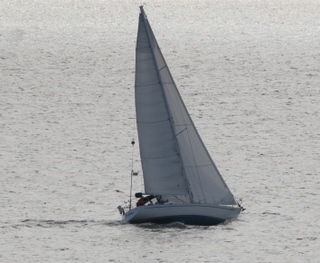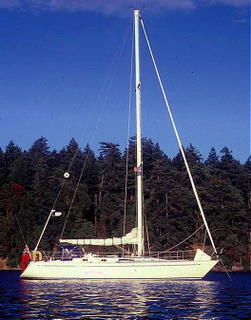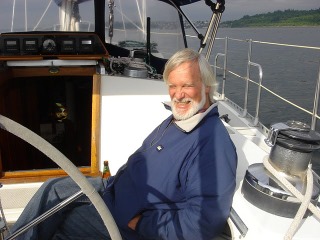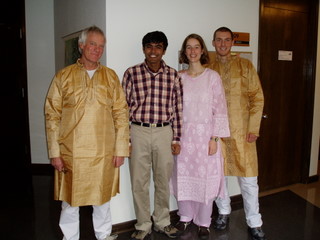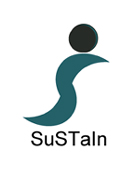 |
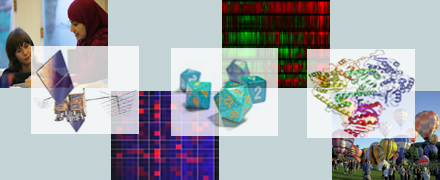 |
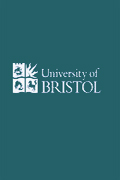 |
|
Tributes
Family & early life
Oxford & Liverpool
Durham & Newcastle
Seattle
Shorter contributions
Obituaries
Memorial gathering and symposium
Programme
Music
Abstracts of talks (pdf)
|
Seattle, 1989-2007David Mason (Delaware)I just read your (Peter Green's) obituary of Julian Besag, written with Peter Diggle for the IMS Bulletin. I believe that you caught much of his essence. Yes, Julian was always quick to repudiate any suggestion that he was a "mathematical" statistician. He once threw a pint of beer in my face in the College Inn Pub near the University of Washington for improperly introducing him to a group of fellow drinkers as a statistician. He preferred to be considered a "statistical scientist". Yes, he was certainly a difficult, but also unforgettable character. If I remember correctly, Peter Green, Julian and I hiked up to Lake Ann, near Mount Baker sometime in the early 1990s. Jesper Møller (Aalborg)The first time I met Julian Besag was at the 1985 Edinburgh Workshop on Statistics and Pattern Recognition, where Julian presented his highly cited paper "On the Statistical Analysis of Dirty Pictures". Apart from myself and another PhD student, many glorious statisticians attended, including Stuart and Donald Geman, whose celebrated paper on simulated annealing, Gibbs sampling and Bayesian restoration of images had appeared the year before. Julian and the Geman brothers had a long dispute on their different approaches for Bayesian image restoration problems, and I was very impressed by all of them. What I liked in particular about Julian's research was his effort on finding simple useful solutions to complicated and computationally demanding problems in spatial statistics. I was well aware of Julian's previous important work on local specifications of Markov random fields, but his paper on Dirty Pictures was an eye-opener for me on how useful this approach is. So in 1985 I was impressed by meeting Julian in person. On the one hand he left me the impression of being a very intellectual and influential researcher - which of course was a correct impression. On the other hand he also appeared to me to be a bit wild, which of course appealed to me as a young person. What surprised me was his interest in me, a completely unknown PhD student. As I later realized, Julian was often a very generous mentor to younger researchers with whom he would spend lots of time, asking your opinion about things you had never heard about. If I should characterize Julian's research with a few words it would be "innovativeness", "simplicity", "usefulness", and of course "passion". One good example is Julian's invention of the pseudo-likelihood for a lattice process in his famous 1974 paper. Three years later in another paper by Julian, he derived a pseudo-likelihood for the Strauss point process as the limit of the pseudo-likelihood for the auto-logistic lattice process approximation. In 1991, Jens Ledet Jensen and I published a paper in Annals of Applied Probability where we gave a direct argument for obtaining the pseudo-likelihood for a general spatial point process and established consistency of the maximum pseudo-likelihood estimator. Perhaps this was one reason why Julian invited me for a longer stay in Seattle in the summer of '92. I offered to give a series of "Lectures on Random Voronoi Tessellations," resulting in a booklet with the same title. I'm not so sure how successful I was with my lectures. The style was very different from Julian's - probably he thought something like "lots of superficial mathematics and not so much important statistics". But socially we had a great time together that summer in Seattle. I'm also indebted to Julian for having introduced me to many of his great colleagues at the University of Washington, in particular Charles Geyer who was another summer guest at that time, and with whom I started to collaborate. I would like to tell a small story from one of the many parties we had during that summer in 1992. It was at Julian's house-boat, where my three-year-old son was standing outside at the upper floor, dropping wine glasses one by one into the water. Those who have referred to Julian's temper may perhaps think that Julian now got very upset. No way. In fact he was very understanding - and it was not because of too much wine. This illustrates only partly how much I'm indebted to Julian. It is not only all the wine glasses I owe him. I simply owe a debt of gratitude to Julian for being a role-model, for stressing to me the importance of solving well-defined problems - as he said when I suggested some of my crazy ideas - and for all the pleasant and stormy times together. Indeed he is much missed. Leo Held (Zurich)I first met Julian in 1992 by a complete coincidence. I had just finished my Diploma thesis at the University of Munich under the supervision of Ludwig Fahrmeir on "Gibbs sampling in non-Normal state space models" and needed a break. I had some money left, so I decided to travel to New Zealand. I went to a travel agency (the Internet had not yet arrived) and the travel agent offered me two options: a flight via Asia or a flight via America. She mentioned that a flight via the US had the advantage that I could stop for free at any city in the US. Those were the days of Nirvana and grunge music, and I decided to take the American option and to make a stop in Seattle. So after my visit to New Zealand I arrived in Seattle and, somewhat spontaneously, thought I should go and visit the Department of Statistics. I was vaguely playing in my head with the idea of doing a PhD in the US, so I went up to the campus, without any appointment, and eventually entered the department. I ran into Heike Bickeböller, at that time a PhD student of Elizabeth Thompson, who asked me who I was and what I was looking for. I told her about my previous work on Gibbs sampling and my interest in doing a PhD, so she suggested that I talk to Julian Besag. By another complete coincidence, Julian was at that very moment just sitting next door in the common room, and Heike introduced me to him. I do not remember much from our first conversation, but I do recall that during it Julian got up and went to his office, coming back with offprints of two or three of his papers, including his 1991 "BYM" paper and a paper entitled "Towards Bayesian image analysis". So I took the papers with me and eventually flew back to Munich. Later on Ludwig offered me a PhD position in his group and I decided to stay in Munich. However, Ludwig knew of my initial intentions to go to the US and encouraged me to apply for a grant that would finance a one-year stay at a university of my own choice during my PhD. The funding agency, the German Academic Exchange Service (DAAD), required, however, that somebody at the University where I wanted to go would agree to take care of me during my visit. The only person I knew was, of course, Julian, so I dropped him an email asking for a supporting letter. It took some time until he replied, but eventually he did, and he said that he did indeed remember me and that I would be more than welcome. Some weeks later an official invitation by Elizabeth Thompson, department chair at that time, arrived. I got the grant and in August 2005 moved to Seattle. I did not see much of Julian during my first weeks, but suddenly he appeared and invited me to a ten-day sailing trip in his boat, together with two other graduate students. At that time I was warned that Julian was a somewhat demanding character. So I thought, for a ten-day trip it would be perhaps appropriate to bring a bottle of single malt whisky that would serve us for the trip and would perhaps help to make the trip more pleasant. When I arrived at the boat, Julian was waiting for me and I handed over the bottle of whisky. Quite surprisingly, Julian got angry at me and shouted "Are you crazy? No spirits on the boat!". Somewhat irritated I went back to my car, dropped the bottle there, and then we left for the trip without any whisky. Later I found out that there were fairly large reservoirs of beer and wine on the boat and I am still wondering why whisky was forbidden. Julian was very quiet during the first few days and I was glad that the two other graduate students were with me. After a few days I thought it was time to start some conversation about statistics. So I went to Julian while he was steering the boat and said "Julian, can I ask you a scientific question?" Without even looking at me the answer was short and brutal: "No!" I tried to insist and added: "But it is only a simple one." He replied: "Those are the worst ones!" and the conversation was over. He had a point, but this incident was not particularly helpful for our relationship. I decided to avoid Julian after we arrived back in Seattle and looked at other options what to do: I took a class with Werner Stuetzle on Statistical Computing, one by Finbarr O'Sullivan on Imaging and also joined a research group on Generalized Linear Mixed Models in the Biostatistics Department, with Norman Breslow. I also successfully completed a test to obtain a motorcycle driving license and eventually also bought a bike. I saw Julian only from time to time, but at some stage he invited me to give a seminar in the Statistics Department, about my PhD work so far. That seminar took place just after the Christmas break and I had been working hard over the two weeks prior to the seminar to prepare my presentation. I think that I did not perform too poorly. Shortly afterwards Julian came into my office and suggested that we do some work together. He suggested a few topics, Bayesian image analysis being one of them. However, I got interested in a paper on space-time modelling of epidemiological rates and said that I would like to work on this topic. He was happy with that, and a few days later I got a very long email with his comments about the paper. I do remember that the email was sent off at night-time, somewhere between midnight and 6am, which somewhat irritated me. This email was only the first one of a whole series of hundreds of emails by him and, looking back, it seems that many of them were sent at night time. I started to wonder about his life-style, also because he often mentoined his (quite worrying) health problems. So the second part of my visit in Seattle finally gave the expected result, some joint work on space-time models for count data, which we eventually published a few years later in Statistics in Medicine (2008). Our relationship was always very intense, and it was not a good idea to argue with him. He easily got quite personal, but he was always very honest and supportive and also helped me in editing one or two other papers that I wrote during my visit. Perhaps the most impressive feature of Julian was his passion for research: he allowed no compromises. But during my visit in Seattle I learned very quickly that he was not a happy man at all, he seemed lonely and - quite bizarrely - even complained that he had also been unsuccessful in research. "Nobody reads my papers!" were his words. One lesson I learned for myself was not to sacrifice my life for research. After I left Seattle I saw him at several occasions, twice in Munich, once in Luminy and once in Ambleside in the Lake District. Things were not as difficult as in Seattle and we generally had a good time. The second visit in Munich was the last time I saw him, and he was already very ill. He could barely walk, but I still remember an inspiring talk he gave. Among many other things he was illustrating how a simple MCMC algorithm can solve Sodoku problems, which were becoming quite popular around that time. I had already a family and a kid and I took him to a trip to Lake Stanberg. We visited the Buchheim Museum in Bernried, of course by boat leaving from Starnberg. I think he was glad to see me settled and happy, with a life that was also interesting and challenging outside work. I still can see him leaning over the railing and looking quietly over the water, just as he had done ten years earlier in Puget Sound. Michael Stephens (Simon Fraser)I did not know Julian well, but of course knew of his outstanding work. I had heard of his health problems, but did not know they were so serious. When he returned to England, I was glad that he went to Bristol, my own home-town and university. My best memory of Julian was at a meeting on spatial statistics, organised by Charmaine Dean here at Simon Fraser. Julian spoke about his work on disease modeling, where he had named a town in the north of England where the disease in question was most dangerous. This had raised the furies from the worthies on the council, and headlines in the tabloids. Julian's account was quite entertaining but the surprise and indignation came through loud and clear, with a warning to us all about unexpected feedback from our best intentions. On a more personal level, I once recommended a Mexican student to Julian. The student had done some quite good work at the Master's level on the spatial variation of fish in the Caribbean, and I thought he would benefit greatly from working with Julian. It did not work well, although I don't exactly know why, and another colleague, perhaps Elizabeth Thompson, took over after a while. Thereafter, I ceased recruiting for Julian. Quite recently, two of my colleagues, Tim Swartz and Derek Bingham, visited Bristol and told me that Julian asked after me. I appreciated this very much, although, mindful of the last paragraph of Peter Green's very complete obituary, I did not dare to ask how Julian's question was phrased. Tilmann Gneiting (Heidelberg)On my way from the city centre to Goldney Hall I was passing by Lime Kiln Road, where a little over a year ago I had the privilege of visiting Julian in his apartment. While he felt weak then, his mind was as sharp as ever, and we enjoyed the views of SS Great Britain across the river, much like Julian had enjoyed living on the water throughout his life. We've lost a colleague who was an intellectual giant, with an ever-enquiring and at times inconvenient spirit, constantly on the search for truth and perfection, potentially harsh on his environment, though much more on himself. Julian and I met first in spring 1997, when I was about to receive my PhD and interviewed for a faculty position at the University of Washington in Seattle. We subsequently co-taught special topics courses in spatial statistics at the University of Washington, in winter quarters 1998, 2000 and 2002, and autumn quarter 2003, arguably the highlight of my teaching experiences. As in his research, Julian was striving for perfection in his teaching; as in his research, he succeeded in unprecedented ways. As an aside, I recall vividly Julian grumbling about class preparation, in that most of his time was spent in more or less futile attempts to locate teaching materials in his famously messy office! I'm hopeful Julian would be pleased to know that we recall him as an eminent scientist and truth-seeker, a unique character, and in many ways the most generous British gentleman. No doubt, Julian's statistical legacy as well as our personal memories will continue to inspire generations of scientists. Alfred Stein (Enschede)To my sincere regret I cannot make it to the Julian Besag memorial in Bristol. I also do not have any pictures of him or us, only a vivid memory. Julian has been what one may call one of my "scientific heroes". I have learned a lot from his papers, discussions with him, and listening to his presentations. They have deeply influenced my own thinking. We share Jewish ancestry, his ancestry is direct, mine is somewhat more remote (third generation) and his has been more violent than mine. During several communications this has become obvious, and it has made me feel somehow more in a similar way. Our first meeting was at the Luminy workshop on Highly Structured Stochastic Systems (I think that this was in 1999). I remember him there as the key scientist. He gave the first talk, subsequent speakers presented their work referring to his publications (especially the BYM paper) and many of the younger scientists were revolving around him. He clearly enjoyed this and felt himself totally at ease. We did not have much contact, though. My next memory is my visit to Seattle in 2000, during the same sabbatical when I visited Bristol. He took me on his boat and we had a delightful day. On the road to the boat with his old Jaguar he had to pick something from his house-boat, and left me standing outside, as he did not want me to witness the mess inside (according to his own words). Some time later he visited the Netherlands, attending the Lunteren meeting. Our university facilitated this trip and he did an excellent job discussing science with some of my PhD students. Later that day we invited him to our house where we had a drink, and we took him to a Greek restaurant in the vicinity. He took a delightful pleasure in identifying the words, the language of the dishes on the menu, and to see whether he could grasp the roots of it. We discussed Maurice Bartlett, we discussed field hockey (my wife is an enthusiastic field hockey player herself) and we touched upon his private life that he was not inclined to be willing to discuss. The evening was a long one, and my wife and my then 9-yr old daughter, who also were there, had to leave during the dinner. My daughter still very well remembers this event. During this visit Julian invited me to spend a longer time with him, e.g. for a sabbatical, but this never materialized. When Julian started having serious problems with his kidneys, I had my last contacts with him. That must have been around 2003. I somehow made the wrong remark in an email and that upset him so much that we had no further communication. I only learned later that he retired and that he had a part-time position in Bath, and heard only recently (just before his untimely death) that he had a similar position in Bristol. I was really shocked when Marie-Colette van Lieshout communicated his death to me when I had just passed through Seattle, where I thought he was still around. Marie-Colette and I wrote a scientific paper that we have dedicated to his memory. It is currently being reviewed for Mathematical Geosciences. We lose with Julian's death an outstanding, original, independent, unique, deep scientist who has really contributed to the development of our field of science. The world will never again be the same. Finn Lindgren (Trondheim)Julian's work has had a profound impact on my development as a researcher, and I remember his 1974 JRSSB paper (as well as his later work) still being the major source of useful information about Markov random fields well into my time as a PhD student in the late 1990s and even early 2000s. I only met him in person a handful of times, the first being at a small workshop somewhere in Sweden more than ten years ago; his reputation preceded him in the form of anecdotes related to me by intimidated students from the UK, and their characterisation of him as "harsh but fair" was proven correct. Sitting in the audience, he took command of one session, deciding single-handedly that an extended discussion about one presentation was appropriate instead of moving on to the next talk. Given that this incident is the only recollection I have of the meeting, including its location and precise topic (though statistical image analysis was involved), I think it's fair to say that Julian made quite an impression. I also feel honoured that I was allowed, as visiting professor, to teach the first course in statistical image analysis in Seattle after Julian had withdrawn from work there, in 2007. Håvard tells me that Julian was aware of our SPDE/GMRF work, and I would have enjoyed (though with some trepidation in anticipation!) hearing his opinions about it. Peter Guttorp has told me that they had a long-standing discussion about GMRF models for non-lattice problems, and is happy that we "have proved that Besag was right". Honey Vincent Valle (Mindanao, Philippines)I'm sad to hear this news of Mr. Besag. Although I haven't met him nor seen him, I'm forever grateful to him. I corresponded with him way back in 1999 during the conduct of my undergraduate thesis on autologistic regression. He incessantly provided me with information on applications of the autologistic regression. He was a kind and understanding man, knowing that I had no previous knowledge on the subject. Larissa Stanberry (Seattle)I'll try and remember more things, but the first one that comes to mind is that story of a field hockey match in Ireland. I think Julian was a goalie. It was a really hot day and someone offered him a glass of Guinness during the match, so he took a sip and spat it out, because he just wanted a bit of refreshment. Needless to say, there was a huge uproar from the stands when they saw him doing that. He taught a stochastic modeling class in the University of Washington for many years. When I took it from him, he was pretty ill by then, so I'd expected him just to be using his old notes. That's what he did for the most part, but pretty much for every class he had some amendments, additions and corrections. I was pretty impressed by the standards he set for himself. I've been thinking about him lately, and miss not having him around. I wasn't corresponding with him frequently lately but just knowing he was there was enough. We happened to drive by the marina where Julian kept his boat and where it still is probably. I don't know if this is the place, but I had a few sudden recollections about Julian:
Debashis Mondal (Chicago)Julian Besag was my professor and mentor at the University of Washington, Seattle. I heard of Julian long before I actually met him as a graduate student. My professors in India spoke very highly of him, and encouraged me to go to Seattle and work with him. I remember Julian most as an inspiring and dedicated teacher. Not surprisingly, given his reputation in the department, I ended up taking five courses with him in a period of two years. In particular, I will always be grateful to have learned spatial statistics and Markov chain Monte Carlo (MCMC) computations from him. His lectures on stochastic modeling and statistical calculations have shaped my research ideas. I had the privilege to work with Julian on a couple of research projects (one on spatial statistics, another on MCMC p-values), and because of our collaboration I had the opportunity to read all his fine, scholarly works. Moreover, as our research collaboration went on, I learned more about Julian as a person, including his passion for sailing, his fondness for seafood, particularly fish, and his weakness for alcohol. Julian enjoyed telling us stories about his days as a competitive hockey player and amateur cricketer. He cherished the memory of a cricket game when he took six wickets without conceding a single run. All these dimensions made him a hugely interesting personality, who could both educate and inspire his students. One of my enduring memories of Julian is the way he used to end his courses every quarter by showing the class a slide of his trip to India. Julian visited India more than thirty years ago and evidently that visit had made a lasting impression on him. Our class was treated to images of Taj Mahal in the moonlight, Julian on a boat in the Ganges, etc. My tribute to Julian would be incomplete without a particular photograph. This photograph is remarkable not only for showing Julian in Indian attire, but also because it gives a rare glimpse of a clean-shaven Julian. |
